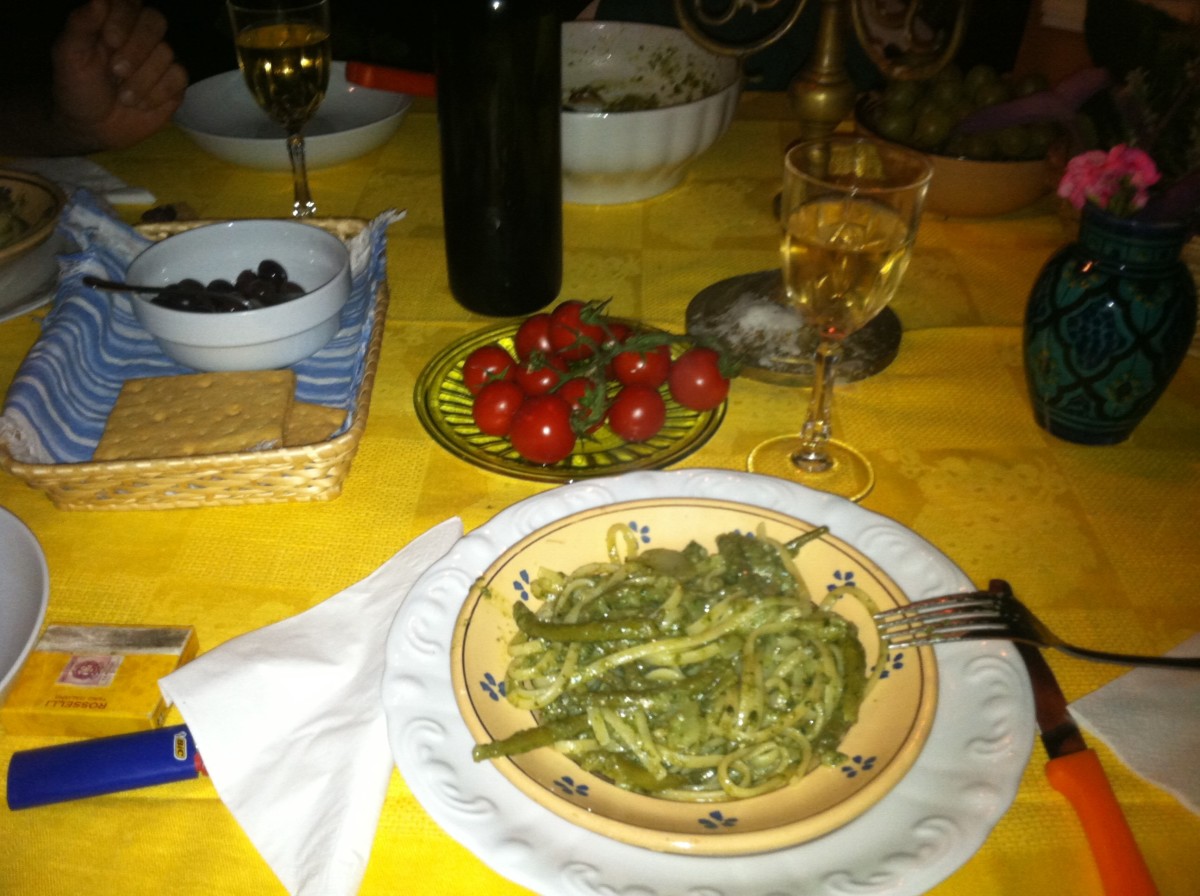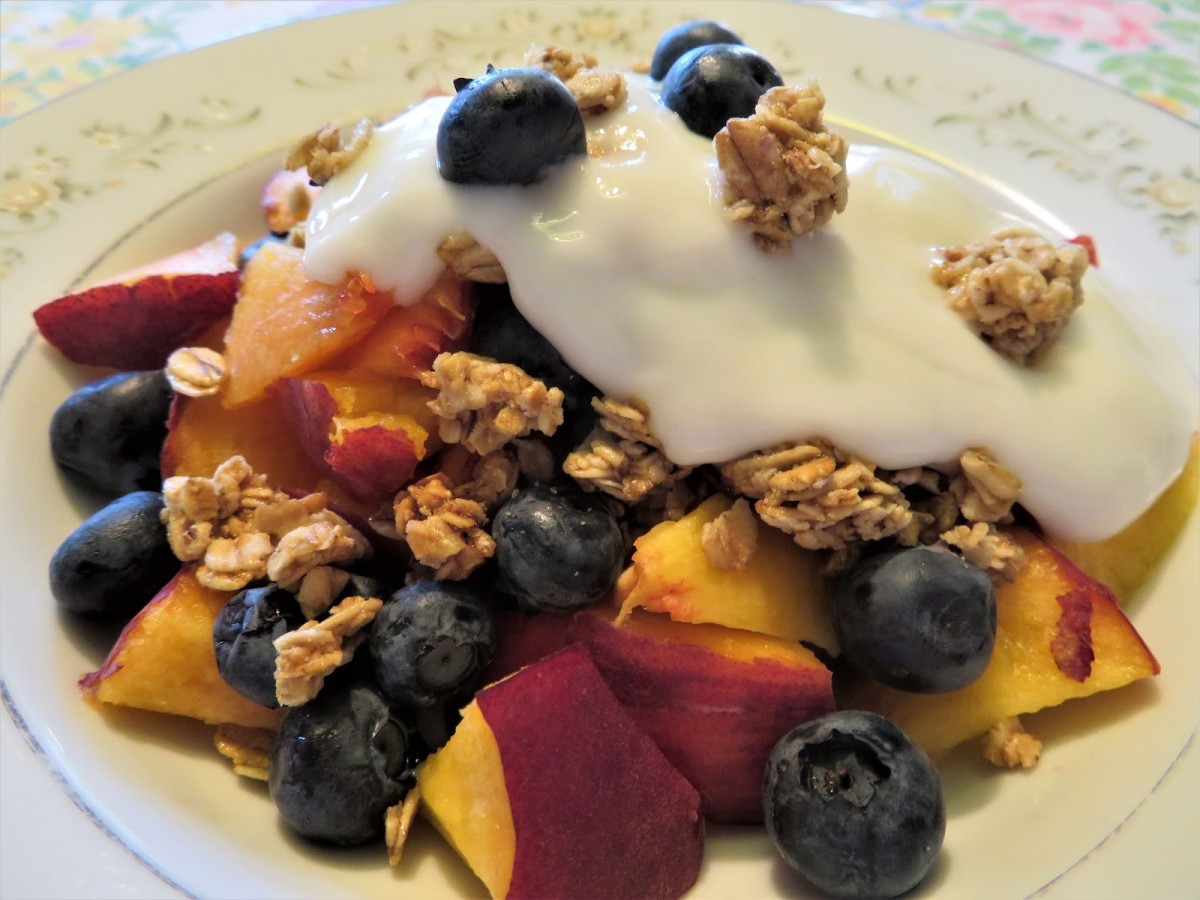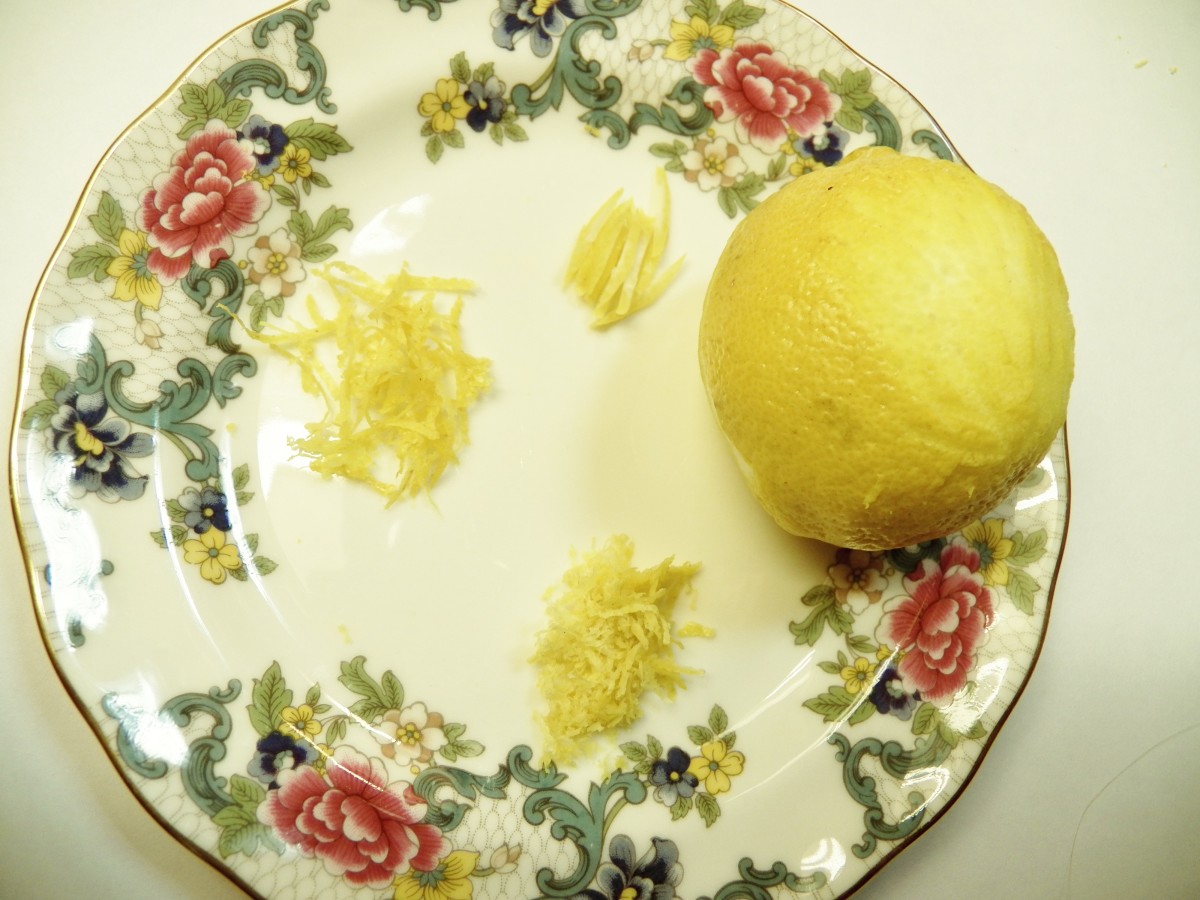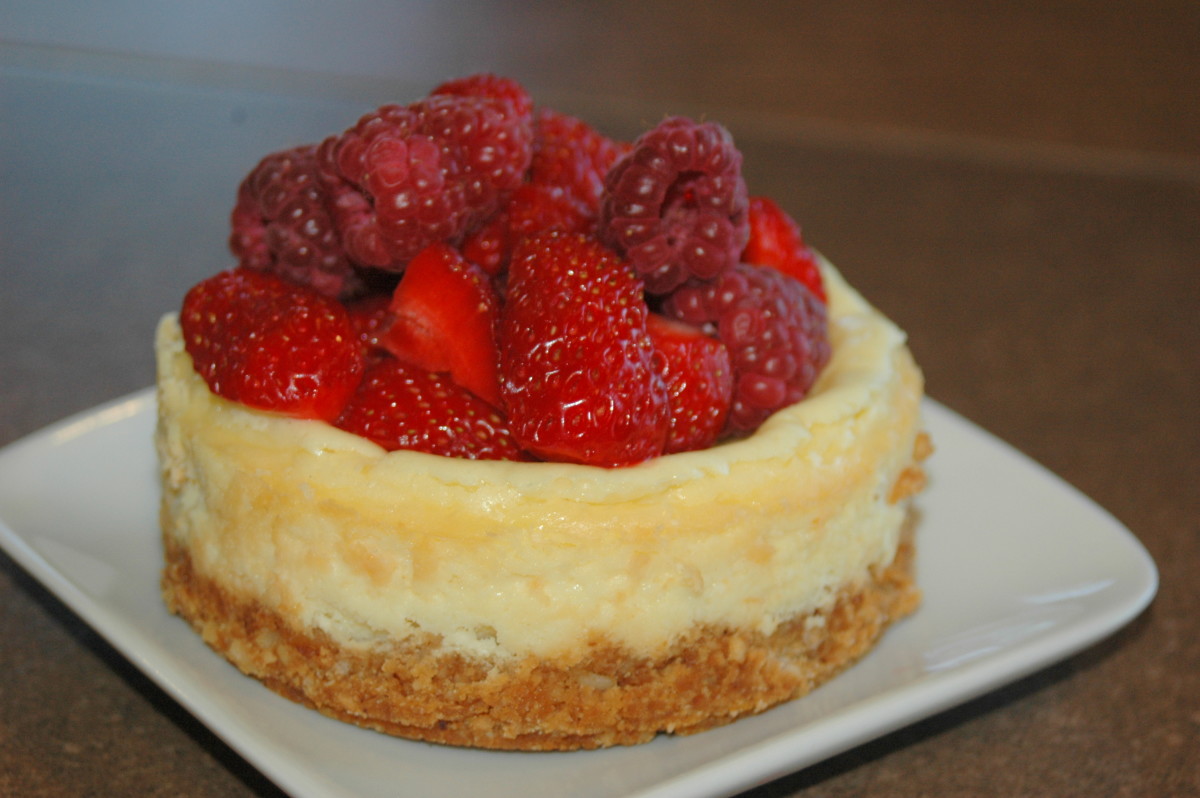Ask Carb Diva: Questions & Answers About Foods, Recipes, & Cooking, #46
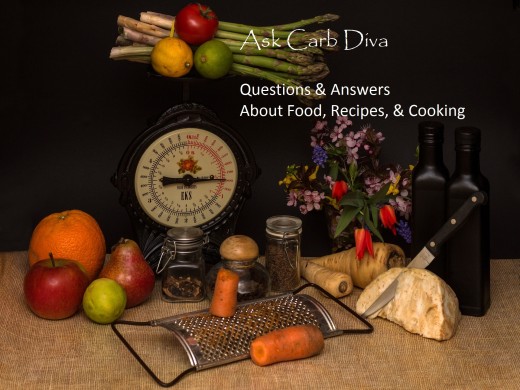
I'm (Almost) Sorry
I have received a few comments about my use of cats in the photo captions for some of my articles.
I wish that I could honestly (without going to confession) state that I apologize for offending you. ("You" might be a dog lover, allergic, or dare I say a cat-unliker). But I can't.
I love cats. My dad loved cats, and as I was growing up, we always had a tabby kitty in our house. When one died, my Dad would bring another one home the next day. They have always been a part of my life. So, love me, love my cat (or just close your eyes when a cat-caption pops up).
So, I'll try to contain myself to just one cat-caption per article. Deal?
Here's our first (cat free) question.
Homemade Granola
This first question is from Mary. "What are your thoughts on granola? Is this easy to make? I think my husband could enjoy this as an impromptu dessert."
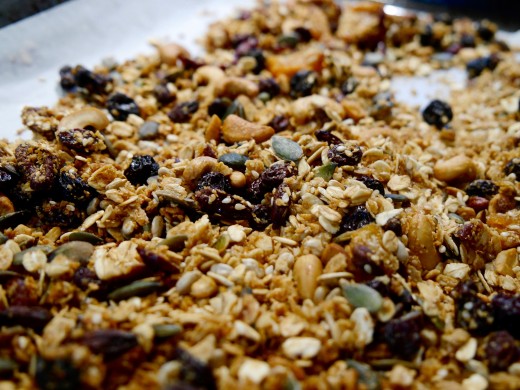
Mary, I don't know if granola is known worldwide, so first, let me explain what it is, how it's used, and then we'll get down to the nitty-gritty. Back in 1863, Dr. James Caleb Jackson created the world’s first recipe for what would become granola. The dish (he called it granula) consisted of dense, unsweetened bran nuggets, soaked in milk. The Kellogs company began to market "granola" about 100 years ago. Their version is made of rolled oats flavored with sweeteners (honey, malt, or sugar), sprinkled with spices, enriched with vegetable oil, and baked or toasted. Dried fruits and/or chopped nuts are often added.
Granola can be a healthy start to your day, a great mid-day snack, or a fun dessert (as you suggested). Or it can be a sugar-loaded fat-bomb in the guise of health-food.
Here are a few facts from an August 30, 2016, New York Times article that might surprise you:
"Serving sizes on granola labels can vary widely, from a quarter cup to one-half cup. But the average person eating granola for breakfast is probably consuming closer to a full cup, said Andy Bellatti, a Las Vegas-based dietitian.
"A cup of Nature Valley Oats ’n Honey Protein Granola has 24 grams of sugar and actually contains more sugar than protein by weight. Nature Valley also has a Peanut Butter ’n Dark Chocolate Protein Granola that has 30 grams of sugar per cup. Bear Naked Honey Almond Granola has 20 grams of sugar per cup. By comparison, a slice of chocolate cake with frosting has 26 grams of sugar. A cup of ice cream has 28 grams of sugar. A regular Krispy Kreme glazed doughnut has 10 grams of sugar."
You asked for recipes. To start our search on the right foot, I went to the CookingLight website where you can always find recipes that are healthy, balanced, easy to make, and made of readily-available ingredients. Their take on granola is spicy, barely sweet and one serving is only 169 calories.
Next, because you have a coconut farm, I thought something that showcases that treat might be helpful. The author of this buttery coconut granola prepares foods that are allergen-free. If you don't have problems with dairy you could probably use real butter in place of the vegan margarine that she recommends. One serving is 260 calories.
Finally, this recipe from WellPlated utilizes a crockpot (slow cooker) instead of the oven. The crockpot does all of the heavy lifting, and you can have homemade granola in 3 hours without the bother of stirring and fussing. Also nice to be able to "bake" something without eating up the house with the oven. This makes a large batch, and a serving is 280 calories.
Will I Die From Eating Raw Cookie Dough?
When I make cookies, I normally divide the dough and put some in the freezer for future use. Well, when 3 pm rolls around I get peckish and tend to eat some of this dough. Is it only the threat of salmonella from the eggs that I am in danger of getting or is there a problem with eating raw flour? Am I dicing with death for the sake of a sugar high?
OK, here it comes.

Mary, I have a secret to share with you. (Shhh, don't tell anyone, OK?) When I was pregnant with my second child I had just one craving. Cookie dough, and unfortunately (?) it was an easy craving to satisfy because
- I had a large freezer
- I was working full time and was "famous" for spending one weekend per month making soups, stews, casseroles, stuffed baked potatoes, meatloaf, etc. to store and then defrost the night before so that preparing the evening meal was easy-to-do (usually 30 minutes).
- Needless to say, making cookie dough, portioning it into scoop-size, and then freezing was a part of the equation. I don't think my family ever did the math on how much cookie dough went into the freezer and how much actually was baked (at least I hope not).

Now, to answer your question, was there no risk, or was I dancing with the devil? Let's look at the possible pitfalls:
Raw eggs: I don't want to ruin anyone's appetite, but the biggest concern with raw eggs is where they come from. Yes, they come from hens, but did you know that hens have only one "exit door"? Yup, eggs pop out through the same hole as chicken poop. So, salmonella contamination can be present on the shell or even absorbed into the shell.
I could probably add that raw eggs are not as nutritious as cooked eggs (The Journal of Nutrition revealed that our bodies only absorb 50 percent of an egg’s protein when we consume it raw, versus 90 percent when we consume it cooked), but let's get real here. No one eats raw cookie dough for the health benefits.
Raw flour: This is a surprise for a lot of people, but when you consider that wheat grows in a field (not in an enclosed, contained environment), critters that walk or fly do their thing everywhere, including in wheat fields. When the wheat is harvested it (of course) isn't washed. I haven't been able to find any statistics on the odds of coming on contact with infected flour, but why take unnecessary chances?
But there is some good news; commercial cookie dough, like that found in cookie dough ice cream and packaged, refrigerated cookie dough, is safe to nibble on, as it has been pasteurized and heat-treated.
My Favorite Things

Each week I showcase one of my "Favorite Things" (in the spirit of Julie Andrews in "The Sound of Music"). I promise that this 'thing' from my equipment drawer will not be an expensive one-use-only promotional product. Most (if not all) are available on Amazon and some might even be in your local Dollar Store.
Today, I will be rhapsodizing about my kitchen timer.
This sweet little gem is small. Small enough to fit in my pocket (which is helpful because I have been known to set it and quite literally forget it. Wander away to places from which the timer beeping cannot be heard).
This timer is extremely easy to figure out. I am not a techie-sort of person, so this is vital. And finally, unlike me (and perhaps a few of you) it can do three things at once. It can time 3 different dishes (and each of the 3 alarms has a different sound).
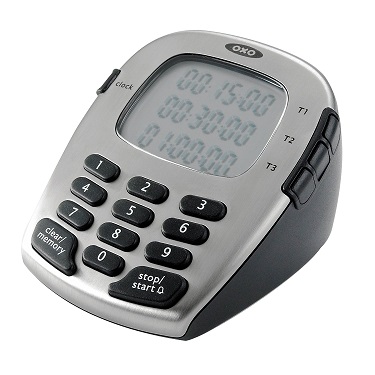
How to Make a Moist Meatloaf
How do you keep meatloaf moist? It's one of my favorite meals, but I'm always afraid to attempt it for fear of having a dry result.

Bill, there's a secret to making the perfect meatloaf, a meatloaf that is tender, not dense, flavorful, not boring, firm, not crumbly. That secret is what every Italian nana uses to make perfect meatballs and sauce—a panade.
A panade is simply stale bread soaked in milk. When blended with the meat(s) you achieve a loaf that holds together but isn't solid like a brick. It's light and bursting with flavor, like this one by FoodSoGoodMall.
Give it a try.
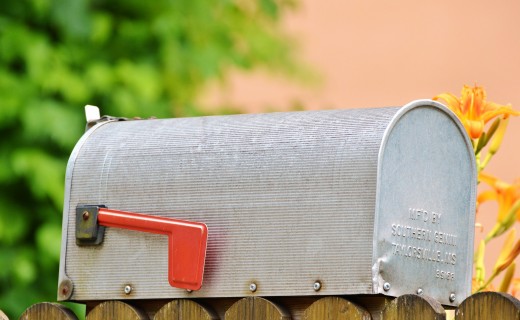
That's it for today. Ask me anything food-related; I promise there's no judgment here. You can be anonymous if you wish. Your secrets are safe with me. You can post your questions in the comments section below, or feel free to write to me at lindalum52@gmail.com.
See you next week, same time, same place.
© 2018 Linda Lum


